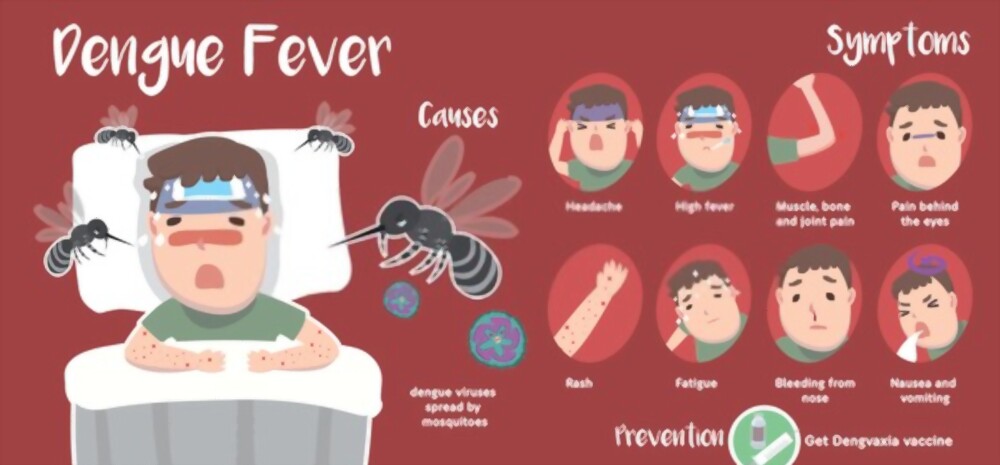Background-
Dengue is a mosquito-borne infection found mostly in urban and also in the semi-urban areas. Symptoms of dengue however differ from cases to cases. Although most cases are asymptomatic, but in rare cases, dengue fever leads to a more serious form of the disease called hemorrhagic fever (DHF). Aedes mosquitoes transmits the virus for dengue and are common in tropical and subtropical parts of the world. Moreover, the incidence of dengue is increasing over the decades.
Virus responsible-
Dengue fever is caused by any of four (DENV 1-4) of virus of the genus Flavivirus. The primary vectors of the disease are female mosquitoes of Aedes aegypti and Aedes albopictus.
Common signs and symptoms-
- high fever (40°C)
- pain in the joints and muscles.
- severe headache
- rash over the body and bruising
- mild bleeding from the gums
Symptoms can start anywhere from 4 days to 2 weeks. They typically last for 2 to 7 days.
Other symptoms occur after fever eases and include the following-
- nausea, vomiting, or severe abdominal pain
- Dehydration
- rapid drop in blood pressure (shock) (untreated cases)
- respiratory issues.
Prevention of dengue fever-
The best action is to prevent bites by an infected mosquito by incorporating the following measures-
- Use screens on doors and windows
- Keep unscreened doors and windows shut.
- Wear covered clothing when outside
- Use of mosquito netting over beds.
- Use insect repellent
- Limit the amount of time spent outside at daytimes.
- Don’t give mosquitoes places to breed. Get rid of standing water in containers and discarded tires.
- change the water in flower vases,etc frequently
Prevalence of dengue across the globe-
Dengue is the fastest spreading viral mosquite-borne disease. It shows 20 to 25,000 deaths, primarily in children annually. Also, it is found in more than 100 countries. America, Asia, Africa, and Australia are the most commonly affected. The global burden is increasing with half the population at risk.

Also read- https://vcurehealthcare.com/the-increasing-spike-of-lung-cancers/





